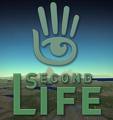70 signs of Intelligent life at You Tube This link may be useful for anyone wanting to look at examples of educational videos on You Tube. The link comes from the Open Culture website which is also worth a visit if you are interested in audio and video on the net.
 Author: Sue Watling
Author: Sue Watling
Semantic web
Second Life
My intention was to blog my return to the virtual world of Second Life but apart from checking it will run on a new laptop I’ve haven’t logged back in yet. Which supports the notion that unless you have a need you are unlikely to take the action. This applies to the majority of the tools in the Web 2.0 toolbox. They have to have an affordance otherwise they can’t stick.
Until I return to Second Life, I’ve added these links which demonstrate how some universities are developing their virtual identity in an alternative world.
- Ohio University Second Life (2.34 mins)
- New Media Consortium Campus in Second Life (5.38)
- Educational Uses of Second Life (7 mins)
- San Jose State University School of Library and Information Science (3.29)
(All links open in a separate window. Close the window to return to this page).
Picasa
We start with good intentions re the organisation of digital images but inevitably end up with pictures scattered across folders and directories. Picasa is free software from the Google factory which scans your computer and brings all your images together into one place – retaining the original categories – and displaying them as thumbnails – in date order – you can browse through and delete the ones you no longer need – those you’d forgotten you had – or all the duplicates you didn’t realise you’d made – all lurking and taking up valuable space. Watch out for the check box when you first launch Picasa – if you don’t uncheck it then Google will become your default search engine – that’s sneaky!
You have to join facebook to use it and it’s the best way to get an insight into social networking. You’ll find me there – and a range of other people from the University of Lincoln. www.facebook.com/
Research from JISC shows ‘Social networking sites are still being widely used and more frequently, mainly for personal or social reasons.’ and ‘Students make wide use of social networking but struggle to see how it could be used in learning’
There is tension between the social nature of the software and potential exploitation of student’s online ‘space’. There have also been issues around the exposure of disparaging and derogatory remarks made within the social network environment.
- Find me on Facebook – so long as you are not a Faculty member or Administrator
- Students tell universities to get out of My space
- Threads that twist and tangle
The University of Leicester is currently researching into the possibility that social networking sites such as Facebook and MySpace can help first year students integrate into university life. Preregistration and induction times are middle ground areas where the boundaries between social and institutional may merge more successfully. But there is a real danger in assuming that everyone has access to the technology….
BookCrossing
Not a web tool as such but still indicative of a Web 2.0 environment eg featuring user generated content and based on the philosophy that the more it’s used then the better it gets – this is BookCrossing.
Described as the world’s biggest book club, this is an way of not only swapping books but also tracking where they go and who is reading them. It’s easy.
- Sign up for an BookCrossing account at http://www.bookcrossing.com/
- Find the nearest BookCrossing zone
- Register the book you’re going to give away
- Download a free label, fill in the details and stick it in the book
- Send the book out into the wild
- Sit back and wait….
Web 2.0 tools (1)
I’ve been thinking about the best way to approach the issue of Web 2.0 tools – a chunk of text didn’t feel like the answer – so I’ve opted for letting YouTube do the talking in this post (all the links below open in a new window)
- The Vision of Students today (5.29) by Michel Wesch and a related Guardian article (12/05/08)
- The machine is using us (4.33) by Michel Wesch
- Information R/evolution (5.29) by Michel Wesch
Finally Web 2.0 (5.18) by Utechtips compares the various features between Web 1.0 and Web 2.0
As well as YouTube there is now TeacherTube which is dedicated to educational video clips.
networked
The real value of networking events is the wider picture; the chance to compare progress and ideas, find solutions and get confirmation that you’re doing ok. I came back from the regional Bb event with a list of software to investigate – they all contained the same issues – accessibility. Echo 360 is a lecture recording/videoing system – not so different to Boxmind – but I’m not convinced that tranferring the traditional mode of delivery to an online environment is the answer. It seems fraught with potential download issues and there were no obvious transcripts – even on the example from Galloudet – a university for the deaf where only one of the speakers signed. Video lectures are only as good as the lecturer and the demonstrations didn’t convince me this was the way forward.
The key to learning online is interaction so I was interested to hear about Engage. Part of the Articulate software package it claims to create ‘dazzling interactions’ but is fundamentally a watch and listen experience. The Quizmaker looked good but being Flash based it rang warning bells. The blurb says it is accessible to virtually anyone. Mmm…. bit of a get out clause there. Apart from being able to customise the appearance with some jazzy buttons and backgrounds, it didn’t seem to offer a great deal more than the Blackboard assessment tools – which reinforces my philosophy of look at alternative ways of using what you already have.
There were some fans of Wimba software; Course Genie converts Word documents into websites. I have a copy and it was reassuring to hear that the code it produces is functional. It also plugs into Bb – we should be investigating this further – in the scheme of VLE skills the next step on from uploading a Word Document is to convert it into web pages and incorporate the activities features.
It’s less about how you present the content – it’s what you ask the students to do with it. Creating online resources is time consuming because existing f2f materials need to be dismembered and restructured. So for me the event helped reinforce my ideas and investigating the software didn’t do a great deal to change my mind – I always thought Course Genie had value anyway!
Information overload
Too much can be as bad as not enough – and the internet is the epitome of excess – too much to read – too many people – all posting, commenting, collaborating. Virtual working is fine in theory but the amount to do and the time you allocate never quite match up.
I’m increasingly uncomfortable with notions I used to support – such as Surowiecki’s ‘wisdom of crowds’ and O’Reilly’s ‘the more you use it the better it gets‘ advocacy of Web 2.0. Berner’s Lee vision of the internet was an ‘interactive’ community but did he underestimate the sheer volume of information ‘out there’ and the need for appropriate tools to manage it – and personal coping strategies for keeping abreast of the digital world while still having an analogue life.
Information overload is only ever a click away and here I am – adding to the proliferation with yet another blog – even more links…
I’m going to use this blog to investigate tools for managing my virtual life. As they used to say – watch this space – only now its more likely to be digg me or subscribe to my feed.
Welcome
Welcome to my area – I’m Sue Watling and this is where I’m going to look at Web 2.0 tools and the virtual world of Second Life.
I also have pages for some of my other projects. Check the links under Pages on the top right of the screen for details. Feel free to add comments to any posts you are interested in. Or contact me directly on swatling@lincoln.ac.uk
I look forward to hearing from you 🙂




